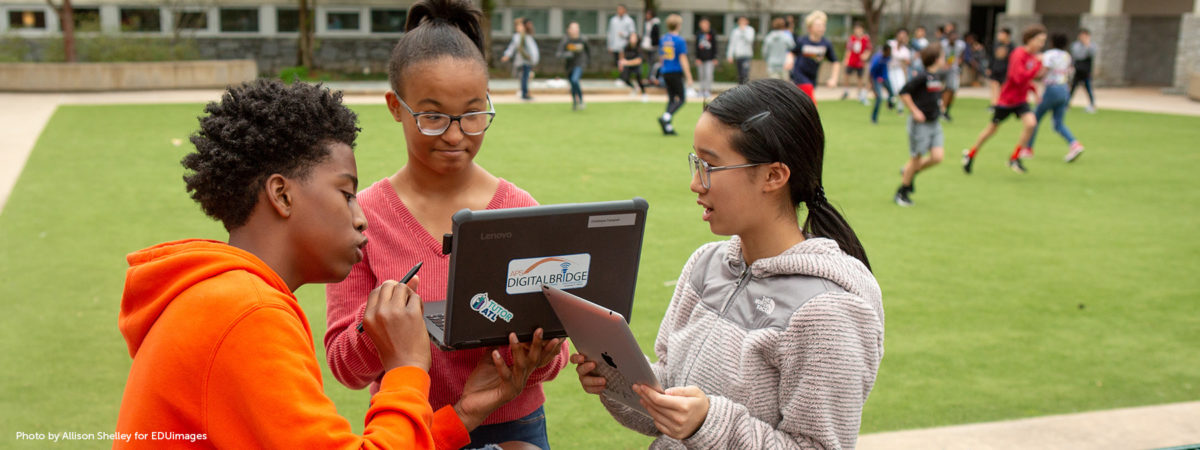
How can we harness the power of edtech to connect and engage our students, while also doing so in full alignment with our curriculum standards? For me, I make sure to think critically about when and where it makes sense to use technology in the classroom, and not just use tech for tech’s sake.
Here in New York, we have Computer Science and Digital Fluency standards that need to be fully implemented in K-12 settings by September 2024. The New York standards cover five concept areas: Impacts of Computing, Computational Thinking, Networks and Systems Design, Cybersecurity, and Digital Fluency. Across the country, 27 states have adopted similar policies. But with everything on teachers’ plates, it’s difficult for us to find time to consider even one more thing.
One challenge is that the technology used to implement these standards needs to be fully integrated within the curriculum rather than be another layer for students to learn. We also must consider equity when asking our learners to use technology. Assigning work to be completed at home where internet access may be limited is defeating. Instead, we need to know what technology is available to each learner and how we can leverage them to support individual learner needs. Viewing classroom technology from this lens of equity and integration enables us to think about the big questions surrounding edtech and standards.
Beyond helping students learn subject content and skills, edtech and digital tools can help prepare them for the world they live in now and whatever may come next. According to the U.S. Bureau of Labor Statistics, employment in computer and IT occupations will grow 13% by 2030, which is faster than the average of all occupations. Our dependence on technology has grown in our homes, in our health care, construction, farming, utilities, and more. Additionally, students also have varied abilities and may need support. Assistive technology can support learning for all students.
There is also a dark side to using technology. There are many incidents of cyberbullying, cybersecurity breaches, and misinformation in the news and images posted online. We need to help our students navigate privacy policies and understand how their digital data is used and stored by any program they sign into. By embedding technology into our curriculum, we can address these concerns and needs regularly.
We also have to consider the quality of the edtech tools that we use. Digital Promise has Product Certifications that identify tech tools that are research based and can support learner variability. These certified products meet the high expectations we have for our students. Each of these products publish their research publicly and support students’ cognitive, social, emotional, and diverse needs.
When I spend time with teachers discussing our digital standards, they often ask how they can fit educational technology into their lessons. I often ask in reply, how do you use a pencil or a dry erase board in your classroom? Pencils and whiteboards are tools that get your students creating and communicating. If we look at edtech the same way, we can begin embedding technology into our curriculum more effectively.
Though edtech tools offer many exciting opportunities for learning, their usefulness is ultimately determined by who is wielding it and for what purpose. Instead of picking a program, or app and using that as a jumping off point, you should choose tools that support specific student learning objectives, enrich the desired learning experience, and allow for creativity.
Through my work at a BOCES in New York, we built activity books with ideas to meet the new state standards. Here’s a small sample of activities teachers can try as they fold technology into their classrooms with the edtech they have available:
By focusing on both the learning experience and standards alignment, we can intentionally identify which edtech tools will resonate with our learners and help them achieve specific goals.